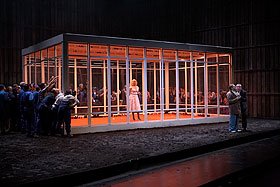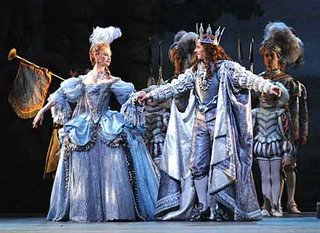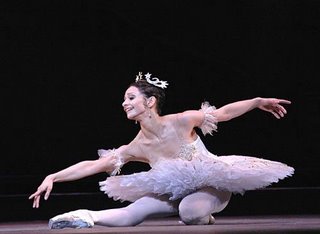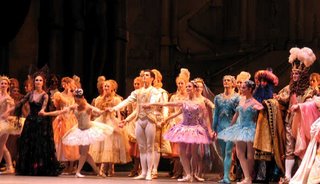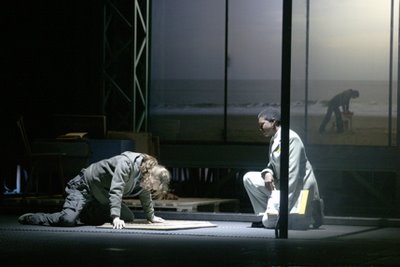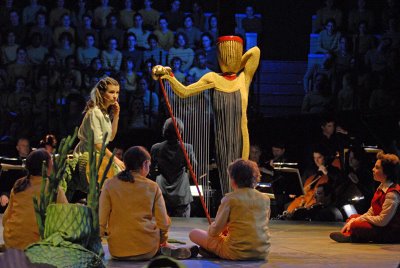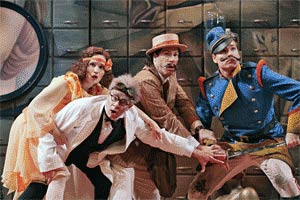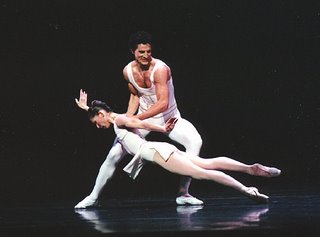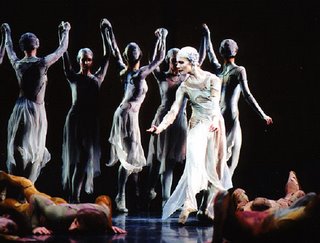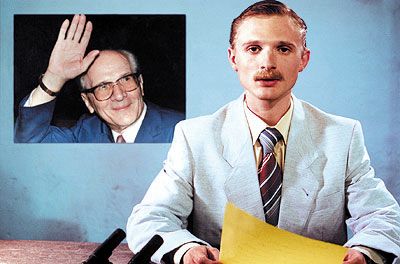Last month | Next monthClassical Month in Washington is a monthly feature that appears on the first of the month. If there are concerts you would like to see included on our schedule, send your suggestions by e-mail (ionarts at gmail dot com). Happy listening!Saturday, July 1, 8 pm; Sunday, July 2, 3 pm
Ground (multimedia theater work using 17th-century ostinato bass pieces)
Ignoti Dei OperaBaltimore Theater Project (Baltimore, Md.)
Review -- Charles T. Downey (Ionarts, July 1)
Saturday, July 1, 7:30 pm
Dave Brubeck,
The Gates of JusticeCathedral Choral Society and Dave Brubeck Quartet
Washington National Cathedral
Review -- Joe Banno (
Washington Post, July 3)
Sunday, July 2, 5 pm
Naji Hakim, Titular Organist of the Church of La Trinité, Paris [FREE]
Works by Bach, Franck, Hakim, and improvisation
Washington National Cathedral
Review -- Richard K. Fitzgerald (Ionarts, July 7)
Wednesday, July 5, 7 pm
Orion Trio (Beethoven, Brahms, Mendelssohn) [FREE outdoor concert]
On the Lawn at Strathmore (North Bethesda, Md.)
Wednesday, July 5 to Saturday, July 8, 11:15 am daily
Instant Opera! (Opera by "Mad Libs!" for children)
Children's Theatre-in-the-Woods
Wolf Trap
Thursday, July 6, 7 pm
Shadow Puppet Drama (Purbo Asmoro) from Java [FREE]
From epic of Mahabharata, battle of King Duryodana and Bima
Accompanied by gamelan orchestra
Freer Gallery of Art, Meyer Auditorium
Thursday, July 6, 8 pm
Baltimore Symphony Orchestra: Classical Hit Parade (Baroque)
Andrew Constantine, conductor
Music Center at Strathmore (North Bethesda, Md.)
Review -- Jens F. Laurson (Ionarts, July 8)
Thursday, July 6, 8:15 pm
NSO at Wolf Trap:
Happy Birthday, Mozart!Itzhak Perlman, violin and conductor
Filene Center at Wolf Trap (Vienna, Va.)
Review -- Mark J. Estren (
Washington Post, July 8)
Friday, July 7, 1 pm
Kings, Queens, Warriors, Clowns: Know Your Javanese Shadow Puppets [FREE]
Wakidi Dwidjomartono and puppet master Purbo Asmoro, lecture-demonstration
Arthur M. Sackler Gallery (Level 1)
Friday, July 7, 3 pm
Opera Institute Opera Scenes Performance [FREE]
Call (202) 448-3465 for information
Ward Recital Hall, Catholic University
Friday, July 7, 8 pm; Saturday, July 8, 8 pm
Rossini,
The Barber of Seville [FREE]
Family opera, version adapted for children by the Lyric Opera of Chicago
Opera Theater of Northern Virginia
Amphitheatre at Lubber Run Park (Alexandria, Va.)
Friday, July 7, 8:30 pm
NSO at Wolf Trap:
To Boldly Go...Emil de Cou, conductor, with narrator Leonard Nimoy
Filene Center at Wolf Trap (Vienna, Va.)
Review -- Glenn Dixon (
Washington Post, July 10)
Saturday, July 8, 8:15 pm
NSO at Wolf Trap:
Ode to BeethovenEmil de Cou, conductor, with mezzo-soprano Leslie Mutchler
Filene Center at Wolf Trap (Vienna, Va.)
Review -- Joan Reinthaler (
Washington Post, July 10)
Sunday, July 9, 4 pm
Operatic Vocal Gala ConcertOpera International
Music Center at Strathmore (North Bethesda, Md.)
Review -- Grace Jean (
Washington Post, July 11)
Thursday, July 13, 8 pm
Baltimore Symphony Orchestra: Classical Hit Parade (Tchaikovsky)
Giancarlo Guerrero, conductor
Music Center at Strathmore (North Bethesda, Md.)
Review -- Jens F. Laurson (Ionarts, July 17)
Friday, July 14, 8 pm; Sunday, July 16, 2 pm; Friday, July 21, 8 pm; Sunday, July 23, 2 pm
Gioacchino Rossini,
Le Comte OryWolf Trap Opera Company
The Barns at Wolf Trap
Review -- Richard K. Fitzgerald (
Washington Post, July 22)
Saturday, July 15, 12 noon and 3 pm
Opera Institute Italian Art Song Recitals [FREE]
Call (202) 448-3465 for reservations
Ward Recital Hall, Catholic University
Sunday, July 16, 2:30 pm; Wednesday, July 19, 7:30 pm; Sunday, July 23, 2:30 pm
Verdi,
Il TrovatoreSummer Opera Theater CompanyHartke Theater (Catholic University)
Review -- Tim Page (
Washington Post, July 18)
Sunday, July 16, 6 pm
Richard K. Fitzgerald, organ [FREE]
Music by Buxtehude, Bach, Mendelssohn, Messiaen, Gigout
Summer Organ Recital SeriesBasilica of the National Shrine of the Immaculate Conception, Upper Church
Monday, July 17, 6 pm
Opera Institute Italian Art Song Recitals [FREE]
Kennedy Center Millennium Stage
Tuesday, July 18
Ronald K. Brown / Phildanco (modern dance companies)
Filene Center at Wolf Trap
Review -- Oksana Khadarina (Ionarts, July 21)
Thursday, July 20, 5 to 8 pm
Artful Evening: The Harmonies of Schuller and Klee
Composer Gunther Schuller discusses his
Seven Studies and Themes of Paul Klee (lecture begins at 6:30 pm)
Phillips Collection (free with price of admission to the museum)
Review -- Charles T. Downey (Ionarts, July 22)
Thursday, July 20, 8 pm
Baltimore Symphony Orchestra: Classical Hit Parade (Mozart)
Edwin Outwater, conductor
Music Center at Strathmore (North Bethesda, Md.)
Review -- Stephen Brookes (
Washington Post, July 22)
Thursday, July 20, 8:15 pm
NSO at Wolf Trap:
Carmina and the RingEmil de Cou, conductor
Filene Center at Wolf Trap (Vienna, Va.)
Review -- Jens F. Laurson (Ionarts, July 23)
Friday, July 21, 8:15 pm
NSO at Wolf Trap:
Music of Richard RodgersMarvin Hamlisch, conductor
Filene Center at Wolf Trap (Vienna, Va.)
Saturday, July 22, 8:15 pm
NSO at Wolf Trap:
Roméo et Juliette in ConcertStephen Lord, conductor
Members of Wolf Trap Opera Company
Filene Center at Wolf Trap (Vienna, Va.)
Review -- Richard K. Fitzgerald (Ionarts, July 25)
Thursday, July 27, 8 pm
Baltimore Symphony Orchestra: Classical Hit Parade (Beethoven's 9th symphony)
Edward Gardner, conductor
Music Center at Strathmore (North Bethesda, Md.)
Review -- Jens F. Laurson (Ionarts, July 29)
Saturday, July 29, 3 pm
Family Opera Day: Excerpts from
Dream of the Pacific [FREE]
Smithsonian American Art Museum, McEvoy Auditorium
Preview -- Michael J. Toscano (
Washington Post, August 4)
 Well, it's summer, so here are a few non-arts thoughts from your moderator:
Well, it's summer, so here are a few non-arts thoughts from your moderator: If you want to have a real French experience, La Maison Française is hosting a big-screen viewing of the France-Brazil game today (July 1, 3 pm), with the French-language coverage on satellite. Allez, les Bleus!
If you want to have a real French experience, La Maison Française is hosting a big-screen viewing of the France-Brazil game today (July 1, 3 pm), with the French-language coverage on satellite. Allez, les Bleus!








